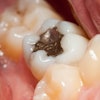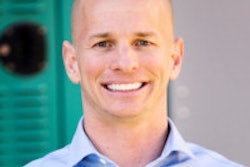
A couple of years ago I bought myself a motorcycle. After some research and talking to some friends, I choose a Yamaha TW200. Everyone told me that it was the perfect bike. I was confident I had made a purchase that was going to be a perfect investment for my life. It is street legal and a trail bike, so I could save money on gas and enjoy the outdoors. I would also be able to learn a new sport and meet new people.
 Curtis Marshall is the vice president of marketing at Dental Intel.
Curtis Marshall is the vice president of marketing at Dental Intel.During the first week after purchasing it, I was giving my daughter a "princess ride" in the front yard. The grass was a little wet and the yard has a slight slope to it. The bike quickly slipped out from underneath me and crashed. I was able to protect my little girl from any injury, but in the process I broke my collarbone. Since then, the bike has sat unused in my garage taking up space. This "investment" quickly turned into an expense.
Today, we are going to discuss the cost of expense and the cost of investment.
Difference between expense and investment
An expense is the cost required for something. An investment is the action or process of investing money for profit. Both involve spending money, but can you see the difference between the two?
The first is considered a requirement that costs money and has a negative connotation. The second is much more positive with the emphasis on profit. As business owners, you are always looking for ways to make more money and increase your profit margin. We all want our expenses to become investments.
Most business owners feel it is difficult to spend money on their business, because they cannot see the benefit of the expense. Dentistry is a little different in this category. Dentists are typically willing to purchase high-end equipment, because the last thing you want is to be hindered in doing dentistry because of your equipment. Although this is a great mindset to have, I often see doctors make huge mistakes that end up costing the practice more than it needed to.
Dr. Connecticut
A doctor friend of mine in Connecticut called me and was excited about a new CAD/CAM machine that he had purchased as an investment. He said, "I am going to dramatically lower my lab bill with this machine."
His friend in New Hampshire bought one last year, so he visited his friend's office. The friend showed him the process from A to Z, and they talked about the prices to run and buy the equipment. Dr. Connecticut friend told him he saw an extra $10,000 in his pocket that year! And the cherry on top was, he could deliver same-day crowns to his patients.
Dr. Connecticut believed that this technology would benefit both and his patients. He was so excited after seeing the equipment in action that on his way home from New Hampshire, Dr. Connecticut called his local representative and ordered this equipment as an investment.
The investment?
When the CAD/CAM equipment arrived, the whole team was excited, because they all heard from the doctor that this investment was going to change their lives. After the initial training was completed, a few family members came in for the team to practice on. There were some small issues, but everyone was so impressed with this technology.
The office began offering same-day crowns to patients. But, after a month, Dr. Connecticut realized that many patients were frustrated with the results. Dr. Connecticut was shocked to find that the equipment had brought several new aspects into the practice, such as the following:
- Time of training assistants
- Paying trained assistants a higher wage
- Cost of having multiple blocks available
- Bad reviews from patients
- Having to redo the crown and still use the lab
This is not what he was expecting. But was this investment profitable?
Viewing a naked doctor
“I often see doctors make huge mistakes that end up costing the practice more than it needed to.”
I asked him if I could strip down his practice and look at his investment. I viewed the last three years of the practice's data. I saw that his lab bill was at 5% (the average is 8% to 10%). The reason why he had a low lab fee was because he is a conservative treatment planner, which resulted in fewer lab cases. He was producing at $410,000 per year, which means his lab bill was $20,500.
Knowing the current trend with CAD/CAM, he was expected to lower his lab bill to 3% or $12,300. The difference between these two numbers is more than his payment for the CAD/CAM system (that is not calculating assistant time, blocks, etc). Unfortunately, this was an investment that had turned into an expense.
Dr. Connecticut did the same thing I did with my motorcycle. He bought with a bit of knowledge, some advice from a trusted friend, and a lot of excitement.
What to do?
It would have been best to look at all the variables that would make the purchase a profitable investment, and matching the probability of the status quo with those variables. This is typically achieved with data. After making a decision on an investment that turns into an expense, it is important to not make another poor decision. To see how Dr. Connecticut turned this negative into a positive, click here -- you will also see why his friend in New Hampshire did so well.
Dental practices are like snowflakes -- no two are the same. Because of this, every investment into equipment, labs, staff, and so on will be completely different. Every office is unique, and you need to be making the right investment for your future.
Let's get naked together.
Curtis Marshall serves as the vice president of marketing at Dental Intel. If you would like your practice to be in the next Naked Dentist column and have your practice undressed, contact him at [email protected] or 801-380-7070.
The comments and observations expressed herein do not necessarily reflect the opinions of DrBicuspid.com, nor should they be construed as an endorsement or admonishment of any particular idea, vendor, or organization.


















